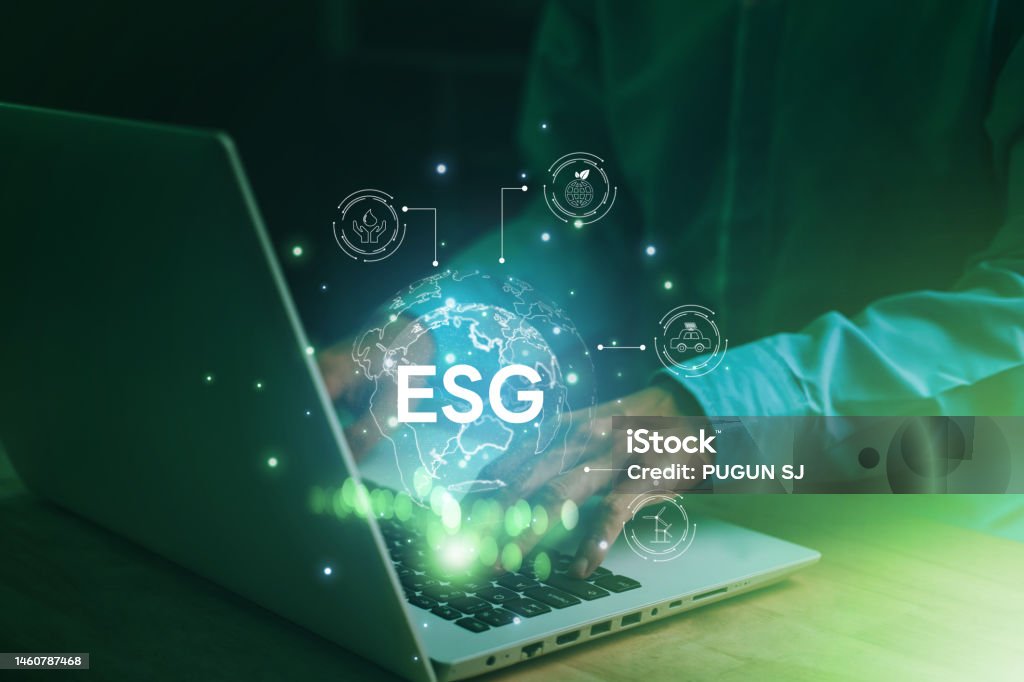Discover how integrating Environmental, Social, and Governance (ESG) goals into business strategy drives long-term success. This comprehensive article explores the importance of ESG, its challenges, and the benefits of sustainability for profitability, resilience, and stakeholder trust, positioning companies as leaders in a rapidly evolving global market.
Introduction
The concept of business management in today’s global environment from being purely profit-oriented has transcended to being sustainable, socially responsible business management. These have shifted from being mere concepts on the periphery of corporate thinking to ESG pillars, which define the way companies manage themselves, create and deploy value and interact with the world. This change is driven more so by consumer consciousness, demands from investors, and implementation of standards that require compliance. With climate change, social responsibility, and corporate governance being on the agenda the ESG criteria is becoming an essential sign for company sustainability and ethical management.
Thus, ESG is not just the shift in concept of success but also a change of how stakeholders evaluate success. Businesses’ ESG plans are now being pursued by investors as a low-risk and stable investment model with reference to potential problems and risks in the distant future, including climate change, social unrest, and other issues. Going specifically deeper, this article examines how these ESG goals can be linked to the long-term objectives which will not only consolidate the competitiveness advantage within organizations, but also contribute to the formation of a more sustainable and fair society. By doing so these companies can create a world of reasonable profit and reasonable responsibility in the future that will help companies to be successful in the long run while benefiting everyone.
1. Understanding ESG: Breaking Down the Three Pillars
To fully appreciate the importance of ESG, it’s essential to break down the three foundational pillars: Environmental, Social and Governance.
The first one is the Environmental component- which revolves around a company’s influence on the environment. This includes measures towards emissions reduction, waste minimization, promotion of renewable energy as well as proper management of natural resources. With globalization the effects of pollution and fluctuating climatic conditions are being felt in the market, hence companies that reduce their carbon foot print are regarded as innovative thinkers capable of mitigating risks in their strategic operations. Apparel and automotive industries are represented by Patagonia and Tesla, respectively, both of which operate on sustainable principles and prove at the same time that business can be profitable and protect the planet.
The Social pillar-being neglected in most conventional business strategies, reflects how firms interact with people-employees, consumers etc. These may comprise of the labour relations, policies concerning diversity and equality, social responsibility and how it supports non-governmental organizations that champion for the rights of people. In the contemporary society where more and more emphasis is placed on social responsibility, customers and workers are likely to be attracted to those business ventures which are not only profit oriented but which also have consideration for people’s lives.
Finally, the Governance- aspect looks at the organizational structures of a company’s accountability, disclosure, and leadership. Actually, corporate governance strategies help in enhancing the quality of decision-making as well as minimizing officials’ corruption-related activities, while boosting investors’ confidence in organisations.
2. Why ESG Matters: The Business Case for Sustainability
Taking up ESG measures is not only a question of ethical considerations but also of practical advantages that help to improve the long-term outcomes of a venture. The authors noted that firms with well-developed ESG strategies receive less risk resulting from environmental legislation, social actions, and governance problems and achieve higher financial returns. Exploratory studies reveal that companies targeting the strategic management of ESG factors are generally more profitable, have relatively low risk and improved access to financing. More specifically, investors are more and more likely to take ESG into consideration as they believe it as a relevant criterion when assessing business sustainability. This is an example of Unilever and other corporations that prove that the long-term focus on sustainability as a business objective expands its capacity for growth or development.
In addition to the economic values, ESG improves a firm’s brand image and manage stakeholder relations considerably. People will spend more money on organizations that they believe to be ethical, environmental conscious and sociable. In the same way, the employees especially the younger generation only want to serve organizations with the same beliefs as them. In essence, the implementation of the ESG principles can help organisations do the following – recruit and retain the best employees, engage the consumer, and manage the risks without being caught off guard with the changes in regulation. In this way, ESG is not just about doing the right thing, to quote the Ministry of Defence’s famous slogan, it is also about survival for those organisations that plan to be around many years down the line, let alone decades.
3. Challenges in ESG Integration: Overcoming Barriers
ESG, of course, has its advantages, however, the implementation of these principles into an organization may be quite problematic. One of the primary informal barriers is actually the cost of the implementation of ESG initiatives, which is seen rather high. A lot of companies, including those with small to medium-sized enterprises, have concerns about the initial cost such as sustainable technologies, certifications or social initiatives. Although this is a short-term mindset that fails to consider the long-term ramifications on the company’s financial status and functioning when venturing into ESG integration. such that organizations that do not tap into ESG trends may suffer from higher levels of regulatory scrutiny, and risks to their operations, not mentioning brand equity loss which would in turn lead to increment in costs in the future.
The last major challenge, is it's hard to manage ESG frameworks and the right metrics to follow. Currently, there is no globally recognised set of ESG standards, which is a problem because when companies attempt to measure their ESG performance, they have no idea which metrics they should use, or which reporting tools would be most suitable. In addition, applying ESG strategies throughout the organisational supply chain and in company culture is often best done with a complete change of mindset that present significant challenges. To overcome these challenges calls for a gradual tackle, the engagement of external human resource personnel and long term strategies. The first key challenge relates to how companies tend to treat ESG as a peripheral issue rather than one that is central to a firm’s core long-term strategic objectives as well as the second main challenge, which has to do with leadership resistance against change.
4. Developing an ESG Strategy: Key Steps for Businesses
The development of an effective ESG framework is critical especially for organisations that intend to operate in a given economy in the next 5-20 years where sustainability is set to dominate the market. The first part focuses on materiality where the organization must determine the ESG factors that are most significant to the organization and its shareholders. This assessment will differ on the industry – what can be vital for a manufacturing business may not be very important for a tech-born business. After the assessment of key ESG areas, companies have to define specific targets that have to be realistic, quantifiable and achieved within a specified timeframe corresponding to the company’s strategic plans. These goals should be challenging but realistic and should communicate to stakeholders that the company is serious about sustainability while at the same time giving the organisation a benchmark to measure themselves against in subsequent years.
Well formulated ESG strategies also come with a need for its constant monitoring and the ability to respond quickly to dynamic trends and changes in laws. The management must create a high-level cross functional team that consists of leadership, sustainability specialists, and stakeholders so that ESG strategies can be set and properly implemented at the enterprise level. Moreover, appropriate disclosure – sharing of information such as achievements, challenges, and plans is fundamental so as to foster trust between a business, its investors, employees and customers. In today’s world, an essential factor is transparency, and organizations that can prove their sincerity in addressing ESG problems have more potential to become leaders of their respective fields.
5. Measuring Success: ESG Metrics and Reporting
ESG initiatives can be difficult to execute when it comes to defining the best metrics in an effort to increase success in implementation. Due to numerous and diverse classifications of ESG factors, there is a need to have a reporting framework to capture all the progress and present information to stakeholders. To measure and report ESG performance several reporting standards and frameworks exist for instance Global reporting initiative (GRI), sustainable Accounting standards board (SASB), and task force on climate related financial disclosures(TCFD). The choice of framework is critical here because it has to capture the company’s ESG priorities and be in line with peers’ practices.
This is because transparency in ESG reporting fosters trust with the investors, consumers as well as the regulators. Those corporations that report about the ESG performance alongside with the positive results and the challenges faced in this sphere contribute to the development of the culture of accountability and leadership. For example, sustainability reports can be seen in Microsoft, which is comprehensive and transparent to reveal the company’s climate action, diversity, and data protection policy. So, the stakeholders can have consistent information and show that, for being credible, businesses do not give lip service on sustainability and pursue long-term growth as sustainable initiatives.
Conclusion
Finally, one can argue that assuming ESG goals assume significant importance in the contemporary economy, the incorporation of such objectives cannot but turn into a must for more and more organizations in order to become truly successful. When companies are taking on the responsibility of sustainable investing and consumer expectations are increasing, those that are effectively integrating ESG factors will become market leaders of reliability and sustainability, innovation. It now became clear that besides reputational gains ESG is a key factor and companies that adopt ESG principles are more financially profitable and have lower operational risks as well as enhanced relationships with stakeholders.
Sustainability still remains a feature of the future business world, and organisations that do not take proper notice of this aspect become obsolete. Organizations that successfully integrate sustainability into their operating strategies will be prepared to drive future growth, adapt to changing rules and respond to the need for change in the global economy. ESG is not just a ‘fad’ in business as its importance is evident in this growing conscious and competitive business society preparing itself for the future success.


























